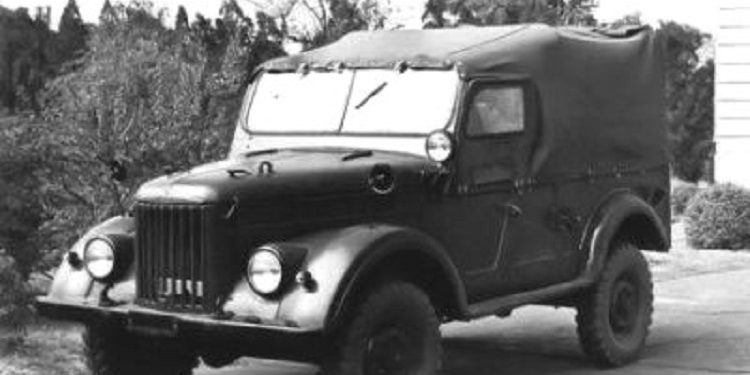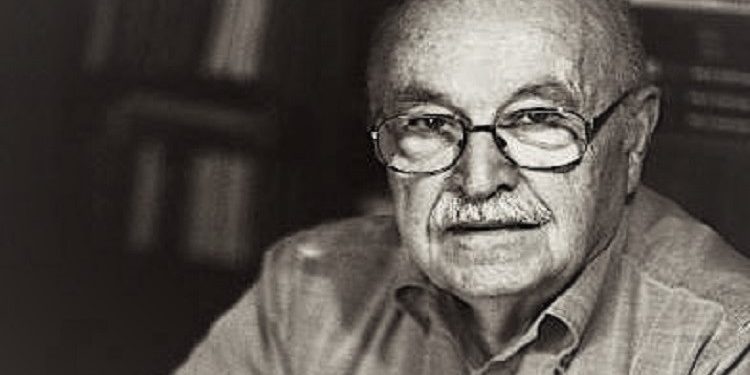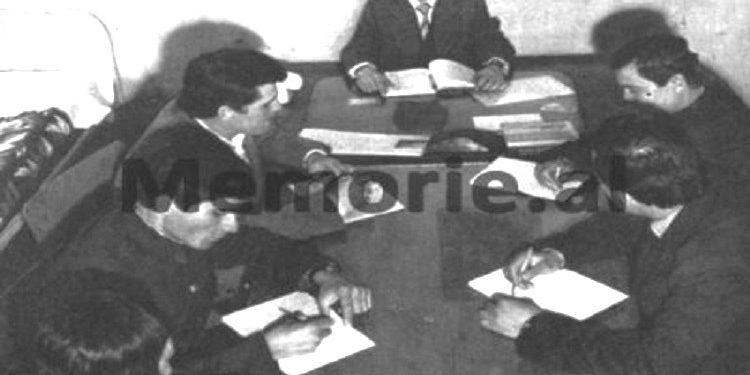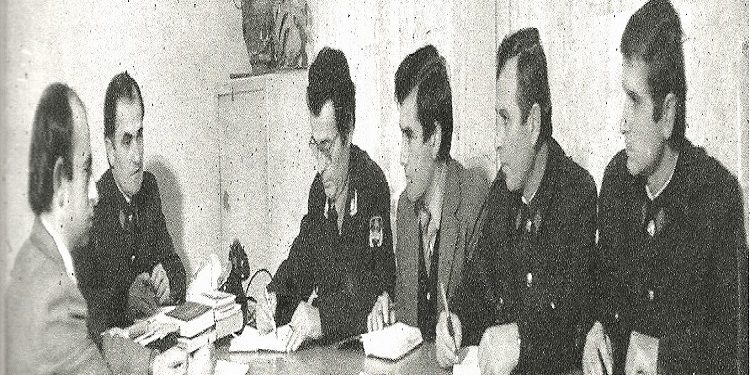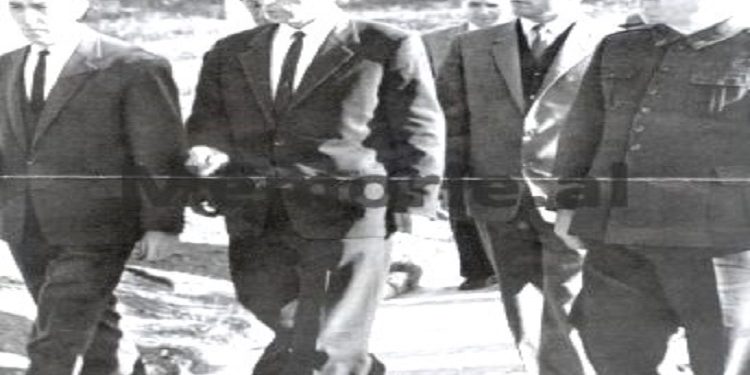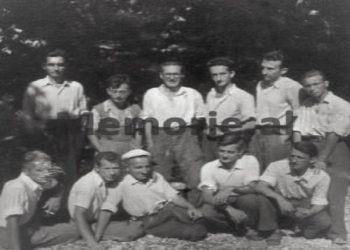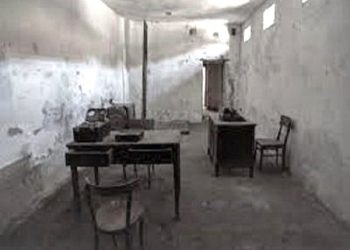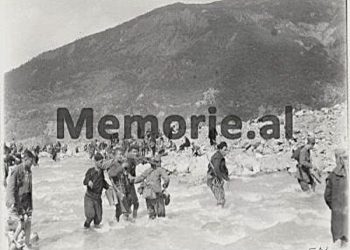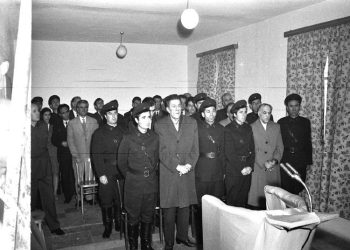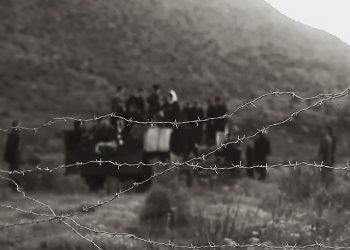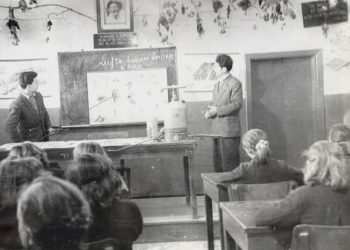By Prof. Dr. Aleksandër MEKSI
Part One
Memorie.al / In the history of Albania over the last 25-30 years, there are many events, activities, and crimes from the past that, because they remain unclarified, reappear before the public from time to time. The public’s interest in them is divided into two groups, besides the indifferent and those too busy with “bigger things”: those who want the truth, whatever it may be – only the truth and the whole truth-and those who do not want this, who seek to bury the process or only want aspects favorable to them (or at least not unfavorable) to be illuminated. For me personally, the boundary between those who seek these truths and those who do not want to or even obstruct such a thing is the line of demarcation between democrats and the nostalgics of yesterday’s shameful communist past. To unify their proposals would mean that no such line exists today.
But history and time have shown that problems, even after they are buried, remain before us and resurface more and more with the demand to expose the truth, to understand the phenomenon, to heal the wounds, to unmask the perpetrators of policies and criminal acts that shame us all, and to remove from the political and public stage (appointed with civil or political status) those who have shown themselves to be wicked, weak, irresponsible, or brazen and shameless. For this, they have violated the Albanian people, because you cannot bake bread with soured dough.
And these are not just the “spies,” as we hear today, but also the operatives, investigators, and leaders of the State Security, the members of the plenum of the Central Committee of the PPSh (Party of Labor of Albania) and the ministers of the dictatorship era, those who handed down sentences beyond the law, the denouncers, the incriminating witnesses, etc., etc.
One of these issues in our contemporary history is that of the communist violence of the dictatorship of the proletariat, through the State Security – the issue of the files, as it is abbreviated by some, but with bad intent by others, reducing the matter to acknowledge only one aspect of the violent past, the one that hurts only others, not their own gang.
Seeing that today the public is rightly becoming re-interested, but is also being manipulated, misinformed, or intentionally diverted from the discussion – just as there are others (the majority) who speak without knowing the phenomenon – we are presenting this article. We wish to address the policies, structures, and personnel of the dictatorship of the proletariat’s violence, how it was documented in the archives of the time, and the degree to which this documentation has been preserved.
These aspects are more than necessary to understand, so that those practices, doctrines, goals, and attitudes are not repeated, but also because it is time to definitively condemn them: the organizers, their leaders, and the active and conscious, or unconscious, perpetrators, and why not, even the apologists.
The illumination and investigation of the crimes of communism are demanded, among other things, by Resolution no. 1481, 25.01.2006, of the Council of Europe – a more than necessary request so that the past is not repeated. This is a request that former communists and former State Security employees replace with talk of files and spies.
I hope that the condemnation of these crimes will take place across the entire Albanian space and not just for the events on this side of the border, because lately there are also nostalgics of the hated Enverist- communist regime over there, when they think it is their right (or as they say in Shkodra: “That’s what their caprice wants”) to honor them, to celebrate them, and to leave a mark on daily life. This is the same as if we, on this side of the border, were to honor Miladinov and other servants of theirs, bandits and executioners of Albanians on the other side of the border.
Therefore, the truths must be known. And here arises the problem and the confrontation between people: to speak or to be silent. Others say to leave it to history (they mean for tomorrow, when they will no longer be around), forgetting that history is being written today. But to do this with justice and honesty, we must first know the verifiable facts and authentic documents, and then make a critical judgment and write it.
THE CREATION OF STATE SECURITY
For almost 70 years, a small group of leaders, chosen by the Serbian communists – the centuries-old enemies of the Albanian race – led Albanians into a dead end, into backwardness from Europe and the civilization to which we belong and aspire. To remain in power forever, they used violence, raising it to a system, according to the model of their Yugoslav and Russian teachers, in an organized system where the foundational elements were the party and the State Security. The former drafted the policies of violence and issued directives and orders, while the latter implemented them.
As the dictator Hoxha said (on March 19, 1963) in a message on the occasion of the 20th anniversary of the creation of the State Security, it “together with the other weapons of the dictatorship of the proletariat, crushed the resistance of the defeated exploiter classes, their remnants, and external enemies.”
The first nuclei of the State Security began to be created in mid-1942, when the dictator Enver Hoxha assigned the Party Committee of Tirana the task of organizing an information network. The Secret Information Service was officially created at the First Conference of the Communist Party of Albania, on March 20, 1943.
Meanwhile, on November 18, 1944, Enver drafted a circular on the organization of the Information Service, which would be “the watchful eye so that development is not hindered by the dark anti-popular forces” and that it must be “everywhere in the army, on the ground, from bottom to top.”
After the end of the war, this service was turned into the State Security. Its activity, organization, and duties up to 1948 are known from Vaskë Koleci’s memorandum (26.11.1948) titled; “On the Trotskyist work of the State Security organs,” just as there should be more complete and official materials in the archives (of the PPSh and the former Ministry of Internal Affairs) about the work of the former State Security during this period.
The results of communist violence and terror in these years, which are attempted to be blamed on Koçi Xoxe and the Yugoslav Trotskyists when they belong to the Communist Party of Albania and the regime of Enver Hoxha, are accurately documented in the number of people arrested on political charges for the years 1944-1948, who are, respectively, 431, 5021, 2909, 1874, and 1421 people, for a total of 11,656. Of these, 584, 180, 116, 50, and 28 people were killed (I am not mentioning the “official” term “executed by firing squad”) without trial. Thus, a total of 958 unfortunate victims of communist terror. Do not forget that Albania in those years had less than 1 million inhabitants.
This data alone would be enough to understand the savagery and abnormality of that political class that seized power by force after World War II in Albania. They are not isolated cases to be attributed to specific individuals who were later punished. They are chilling testimonies of a criminal, anti-Albanian policy, which inevitably influenced the future history of Albania and Albanian life.
In the Albanian press in recent years, information and documents have often been provided about the direct orders of the dictator Enver Hoxha for extrajudicial killings, etc. But, nevertheless, these years are a period that needs to be better and more fully investigated and studied in the archives, the press of the time, and the later press. The State Security Platform of 1948 presents the “mistakes” of the organ before the 11th Plenum, the result of Koçi Xoxe’s “pronounced Trotskyist spirit”:
- Putting the party under the control of State Security organs
- Carrying out illegal acts
- Misusing the people
- Inappropriate organized forms of work, copied from the Yugoslav Trotskyists
- In the work method, also copied from the Yugoslav Trotskyists
These specifics, according to the platform, transformed our state into a police state. I believe this is enough to understand the rampant and anti-Albanian terror of those years. It was the fulfillment of this task that conditioned the educational level of the Ministry of Internal Affairs employees, which we know for the year 1952. Self-taught (without school) were 279 employees, with primary education 2126, with unified school 750, with high school 102, with higher education only two employees, for a total of 3253.
With this platform (1948), the State Security organs were placed under the direct control and leadership of the Party, demanding that “the work of the Security be centralized at a single point, at the Central Committee of the PPSh.” This was achieved by having the first or organizational secretary of the district assist in the party meetings of the basic Security organizations, to help them implement the party line.
The security organs were obliged to regularly inform the party about their activities – that is, the secretariat of the PPSh on all Security actions, the political bureau on the main security actions, and the Central Committee on issues of special importance.
From this, one can understand the “flesh and nail” connection of the two structures and their equal responsibility for drafting and implementing policies such as the violence of the dictatorship of the proletariat, the class struggle, etc.! On the ground, the Security informed the political secretary of the party committee about work problems, but not about the informers and those being processed. The latter could only be informed by the Central Committee if it was deemed necessary.
THE ORGANIZATION OF STATE SECURITY
The State Security had one of the deputy ministers of the Ministry of Internal Affairs as its director and was subordinate, as shown above, to the minister and the leadership of the PPSh, as well as a special sector near the Central Committee. According to the platform (1948), State Security functionaries were the Security people (officers, non-commissioned officers, employees) who had legal or illegal functions at the center and on the ground.
Security collaborators were all the Security people not publicly declared, who served illegally for the Security. They were: residents, informers, and safe-house providers (1948 platform). While in the more complete and detailed platform of 1954, it states that “the agent network is the main weapon in the hands of the organs of Internal Affairs in their fight against the enemies of the people and consists of informers, agents, residents, and safe-house providers.”
The informer was a secret collaborator whose task was to vigilantly monitor the work of the enemy and inform immediately. He was selected by the operative and approved by his chief. The informer was recruited from elements compromised with the enemy or on a patriotic basis.
In the first case, “…he usually comes from hostile contingents (kulaks, without front-group ID cards, former Ballists), but who are not currently developing hostile activity.” He could also be a party member without responsibility, who worked without being imposed upon, but their number had to be as limited as possible. When recruited, the informer issued a statement of collaboration and non-disclosure.
The agent was a qualified secret collaborator who had or could create connections with hostile elements and was usually recruited based on a real recruiting element, so that the recruitment could be imposed on him. It was rarely on a patriotic basis and very rarely a party member or candidate. His approval was made by the minister and his deputy.
The resident was a secret collaborator and illegal assistant to the operative, who, under his direction, kept in contact with up to 8 informers, whom he directed operatively. He could be a party member or a very determined, loyal, and proven patriot, recruited only on a patriotic and voluntary basis. He could be rewarded with a monthly salary or from time to time, according to the results. When recruited, he issued a statement of collaboration and non-disclosure.
The safe-house provider was the owner of the conspiratorial house used by the Internal Affairs organs to hold meetings with their collaborators. He could be a party member or a patriot proven for loyalty. He was rewarded regularly and as needed. When a collaborator betrayed, meetings of collaborators in that house were stopped.
Forced secret collaboration was done based on operational data, denunciations, or other verified documents that proved the candidate had committed a criminal offense. The recruitment was done while at liberty or under arrest. In the latter case, the arrest measure was made with the approval of the leading organs of the Ministry of Internal Affairs.
In these cases, the detention for recruitment was within a period of 72 hours. But, it goes without saying that for dirty work like this, the rules could be disregarded. There are numerous examples of exceeding this deadline, as well as the use of threats and even inhuman torture to achieve the goal. The operative’s connections with the agency. An operative could maintain about 15 agent connections, with several residents, as well as with several agents and informers.
He had to meet with them at least twice a month, listen to their report, and then take it in writing in his presence. At these meetings, the operative gave the collaborator concrete tasks, the conversations, and the questions they should ask. On the other hand, the collaborators were checked with a second operative and operational technology (OT). When they did not perform the tasks, when they refused to spy, they were, as the case may be, arrested or expelled from the agent network.
The meetings of the operative with the agency were held only in conspiratorial houses, or in other secret places, such as in the forest, and only at night. When the collaborator was a woman, there had to be two operatives at the meeting.
Agent processing was the continuous control of the enemy’s work with the help of the agency. We have two types of processing: preliminary processing and active processing.
The preliminary processing of a person began when the operative organs suspected the person and received the first data indicating hostile activity. It lasted up to 6 months. Preliminary processing was done to investigate whether or not the suspected person was developing hostile activity. If so, he was registered in the hostile element card file (the second card file) and placed in active processing. In this card file, they were placed in category II/B or II/A.
Category II/A registered all those hostile elements that were developing hostile activity against the party and the government (read carefully: against the party and the government – our note A.M.), while category II/B registered suspicious elements that were developing counter-revolutionary activity, which was evaluated by the attitude and composition of the family circle and the attitude at work. The social danger of a person was determined not only by the past but also by the possibilities he had to harm the government in the present or in the future.
Active processing was done with a parallel agency, while the categorization was made according to the definitions that were clearly and detailed in the platform. The card file of the hostile element and the agency was kept in the IV-th branch of the State Security at the Republic level, while the card file of the respective agency was also kept in the Branches of Internal Affairs of the districts.
A special place in the platform was given to the rules and procedures for arresting people for crimes against the state and ordinary crimes. Likewise, there were special rules for deportation-internments for people who presented a social danger.
The proposal for this was made by the director of the District Internal Affairs, or the head of the Operative Branch at the center, with justification. Before this, the opinion of the First Secretary of the district was officially obtained. This proposal was reviewed by the deportation-internment commission, which collegially reviewed it and, after making a decision, passed it on to the proposing body for action.
According to them, the measure of deportation or internment was usually taken against family members of people who fled, against people who had been personalities of past regimes and who presented a social danger, as well as against people who presented a social danger but for whom there were no facts to imprison.
There is also an interesting fact in the 1954 platform, which talks about cases where the Minister of Internal Affairs ordered the internment or deportation of a person without the decision of the commission. In this case, the commission had to meet within 3 days to review the decision. During the communist regime, political investigation for crimes against the state was an integral part of the Ministry of Internal Affairs organs. The platform required the investigation to examine every issue with a partisan spirit.
According to it, the head of the Branch or his deputy for Security, as well as their investigators, dealt with the investigation. The work of the Security investigation was controlled only by the military prosecution.
Among the duties of the State Security was also postal and later telephone control. This was subjected to people in active agent processing, when deemed necessary, all arrested and convicted persons; all persons in deportation and internment camps, as well as any correspondence that the State Security suspected had counter-revolutionary content.
Correspondence was blocked, photocopied, or notes were kept from it. As for foreign correspondence, which included everything: letters, telephone conversations, telegrams, parcel post, etc., all were checked through legal and illegal operative workers, as well as by residents who had to be party members or candidates, but with posts no higher than the secretary of the basic organization. The control could also be accompanied by the confiscation of objects. Memorie.al




